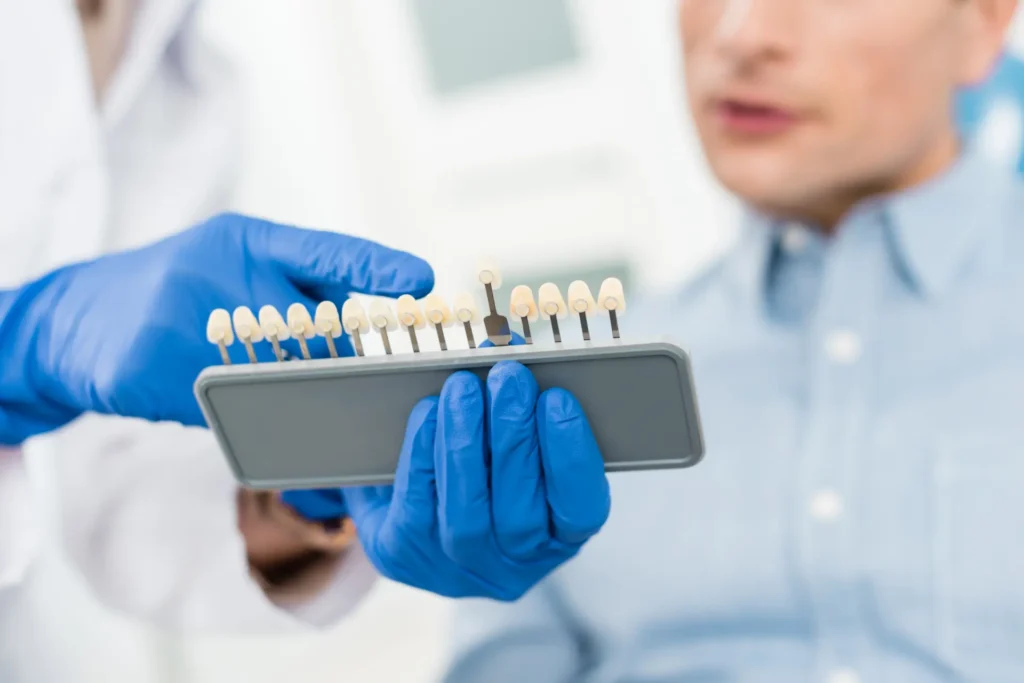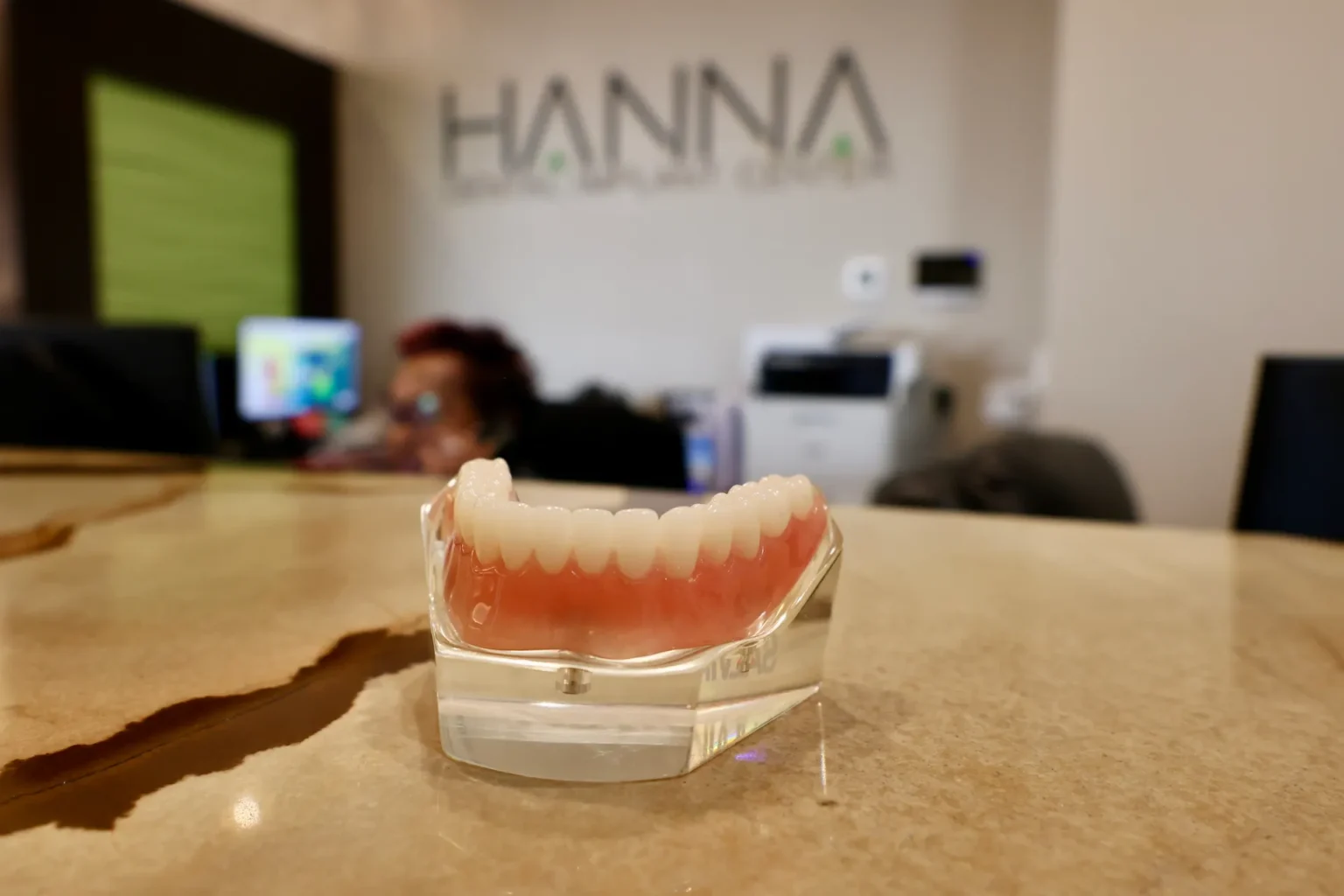Dental implants are artificial tooth roots surgically placed into the jawbone and act as an anchor for replacement teeth. Not only are they designed to look and feel like natural teeth, but they can also help prevent the jawbone deterioration that can occur when teeth are missing. Bone grafting is essential to the dental implant, providing the foundation for a successful implant.
During the bone grafting process, new bone is added to the jawbone at the site where the implant will be placed. This helps to ensure that the implant is firmly anchored in the jawbone and will provide a stable foundation for the new teeth.
Bone grafting also helps to preserve the natural contours of the jawbone, which helps to ensure a natural and aesthetic look. Fortunately, bone grafting is typically done during the implant procedure and will help boost your implant’s success rate.
While the process of bone grafting may seem complex, this article will help you understand what it is and how to prepare for your dental implants.
Understanding Bone Grafting
A bone graft for a dental implant is a procedure used to increase the amount and density of the bone in the jaw, allowing implants to be placed more securely. While it may not be necessary for every case, bone grafting is necessary when there is not enough naturally existing bone to support the dental implant.
Bone grafting is typically done during the implant surgery and replaces the missing bone and provides a stable foundation for the dental implant to be placed. It is also used to reduce stress on the implant, improve aesthetics, and increase the life expectancy of the implant.
For successful dental implantation, sufficient bone density is essential. If the jawbone lacks density, the implant cannot be securely placed and may fail. Bone grafting addresses the issue of inadequate bone volume, allowing more secure dental implant placement and promoting long-term success.
But what causes bone loss? Common reasons for insufficient bone volume include:
- tooth extraction
- gum disease
- natural bone loss due to age
These can all lead to a decrease in the density of the jawbone, necessitating a bone graft for a dental implant.
Bone grafting offers numerous benefits in terms of implant stability, aesthetics, and long-term durability. Bone grafting also increases the long-term durability of the implant, leading to fewer complications and a more successful outcome.
4 Types of Bone Grafts

There are several different types of bone grafts used for dental implants. Let’s take a look:
1. Autografts
The process of using a person’s own bone for a dental implant is often referred to as an autograft.
During this procedure, bone is taken from a donor site, such as the jaw or hip, and transplanted to the area where the dental implant will be placed. The transplantation of your own bone helps to ensure that there is enough healthy bone to support the implant and can also be used to increase the height of a ridge, fill in large defects, or increase the amount of bone in a preexisting ridge.
When taking bone from a donor site, such as the hip, a small sample of bone is taken from the iliac crest, which is the top of the hip bone. The bone is then processed to make a graft material that can be used for dental implants.
Sometimes, donor bone may also be taken from the shin bone. This process is similar to the one used for hip bone, but the bone sample is taken from the shin instead.
Autograft is a safe and reliable source of bone for the dental implant. It provides a safe and reliable source of bone for the dental implant. Autografts also have a high success rate, and the risk of infection is lower than other grafts, requiring a longer recovery time.
2. Allografts
Allografts involve using bone from a donor, which is carefully procured and processed to reduce the risk of disease transmission.
The donor’s bone is obtained from a tissue bank that follows stringent guidelines and regulations set forth by the American Association of Tissue Banks (AATB). The bone is then thoroughly sterilized and tested for infectious agents before approval.
Using allograft bone for dental implant procedures can effectively and safely provide the necessary bone for implant placement. The benefit of allograft bone is that it is a readily available option that can be less expensive and simpler than other bone grafting methods.
However, there are still risks associated with allograft bone, and it is important to understand the potential complications and considerations that may arise.
3. Xenografts
A xenograft is a bone graft that uses animal-derived bone, typically from cows, which has undergone processing to ensure safety. This type of bone graft is used for dental implant procedures when a person’s bone is unavailable or unsuitable. The bone provides a stable foundation for the implant to be placed, and the bone can be processed to increase bone formation and decrease the risk of infection.
The primary benefit of a xenograft is that it is readily available and safe to use. It is an affordable option for implant procedures.
There are some drawbacks to this type of bone graft, such as the risk of infection or rejection and the need for additional surgical procedures to ensure proper graft integration. The body may reject the graft, and the results may not be as long-lasting as desired.
4. Synthetic bone grafts
Synthetic bone grafts combine man-made materials, such as hydroxyapatite or tricalcium phosphate, and natural materials, such as collagen or collagen-derived proteins. These materials mimic the body’s natural bone tissue and provide a strong, stable foundation for dental implants.
Synthetic bone grafts are highly suitable for dental implant procedures due to their biocompatibility and strength. They offer a strong and stable foundation for dental implants and are readily accepted by the body.
However, synthetic bone grafts are not suitable for all types of dental implant procedures, and their suitability and limitations should be discussed with a qualified dental implant specialist before undergoing any dental implant surgery.
The Bone Grafting Process

A bone graft for a dental implant is a surgical procedure performed before the implant’s placement.
During the preoperative evaluation and planning phase, the dentist will assess the bone density and quality of the jawbone through physical examinations and imaging techniques. The bone density must be strong enough to support the dental implant, and if it is not, then a bone graft can be performed to strengthen the jawbone.
The surgical procedure for bone grafting is a procedure where a donor bone material is placed into the jawbone to strengthen it and provide more support for the dental implant. The donor bone may be of animal, human, or synthetic origin and is placed in the jawbone with a surgical drill and specialized instruments. The material is then fixed with screws, and the area is covered with a membrane to protect the graft.
The exact techniques involved in the bone grafting procedure depend on the amount and quality of the existing jawbone.
If the jawbone is weak, a bone substitute such as a ceramic or synthetic material can be used, or a piece of a donor’s bone can be used. The bone graft is placed into the jawbone with a surgical drill and then fixed with screws. Once the graft is fixed, the area is covered with a membrane to protect the graft and help it heal.
A bone graft’s healing and integration process for a dental implant is slow and gradual. After the bone graft is placed in the jawbone, the body gradually absorbs and replaces the graft material with new bone tissue, known as osseointegration. This process usually takes several months, and during this time, your dentist will monitor your progress to ensure the proper healing and integration of the bone graft.
The success of the bone graft for a dental implant relies heavily on osseointegration or integration of the bone graft with the jawbone.
The timeline for successful graft healing varies from person to person but generally takes several months. During this time, the dentist will monitor your progress to ensure the proper healing and integration of the bone graft. The importance of osseointegration cannot be overstated, as it is the key to a successful dental implant.
Importance of Bone Grafting for Dental Implants
Bone grafting is an essential component of dental implant placement. This procedure involves the placement of a bone substitute material to increase the stability and success rates of the implant.
Let’s take a look at some of the important functions bone grafting has:
1. Increase the implant’s stability by providing a more secure base for the implant to attach to.
This increases the success rates of the implant by providing additional support and creating a more favorable environment for osseointegration.
Bone grafts can help to prevent implant failure due to peri-implant bone loss and provide the necessary support for implant placement in compromised areas such as areas with insufficient bone volume or compromised bone quality.
2. Provide essential support for implant placement in compromised areas
Bone grafts provide essential support for implant placement in compromised areas, such as those with insufficient bone volume or compromised bone quality. Bone grafts can be used to build up the surrounding bone structure to provide a secure base for the implant to attach to. They can help prevent implant failure due to peri-implant bone loss and create a more favorable environment for osseointegration.
3. It significantly impacts restoring facial aesthetics and preserving facial structure.
By increasing the implant’s stability, the graft helps provide a more secure base for the implant to attach to. This helps to preserve the facial structure and restore the facial aesthetics by providing a more natural appearance.
Recovery and Aftercare
After a bone grafting procedure, you must follow a strict set of post-operative instructions and precautions to ensure proper healing and integration of the graft. This includes:
- Practicing good oral hygiene habits such as brushing twice daily, flossing daily, and using a mild antiseptic mouthwash.
- Dietary restrictions may also be necessary, depending on the location and type of graft. You should also avoid crunchy or hard foods and vigorously rinsing or brushing the grafted area.
- Your dentist will discuss pain management strategies, including over-the-counter medications and other pain relief methods.
- Potential complications should also be discussed, including excessive swelling, bruising, bleeding, infection, and nerve damage. Always follow your doctor’s instructions for proper healing and recovery.
Ensure you attend your follow-up appointments and monitor the grafted area to ensure proper healing and integration of the bone graft. Proper monitoring helps to detect any potential issues early on and can help to prevent further complications.
Once the bone graft has fully healed, what comes next? The implant is placed into the grafted area and allowed to integrate with the surrounding bone. Once the implant is secure, the prosthetic restoration can then be attached, providing a durable and aesthetically pleasing result.
FAQs
How painful is a bone graft for a dental implant?
A bone graft for a dental implant is typically not painful. However, the area may be sore for a few days following the procedure. Your dentist will likely prescribe pain medication for any discomfort you may experience.
Do you really need a bone graft for dental implants?
If you do not have enough bone structure for a dental implant, your dentist may recommend a bone graft to increase the amount of available bone. The bone graft provides a solid foundation for the implant to be placed.
How long does it take for a bone graft for a dental implant to heal?
A bone graft typically takes at least four to six months to heal completely. You may need to avoid certain activities during this time to ensure the bone graft heals properly.
What is involved in a bone graft for a dental implant?
A bone graft for a dental implant involves grafting bone from another part of your body or from a donor source. The graft is then placed in the area where the implant needs to be placed. Your dentist will then close the area with sutures so that the graft can heal in place.
What is a Bone Graft for a Dental Implant?
A bone graft is a procedure used to build up the bone in the jaw to provide a stable foundation for a dental implant and is typically done during implant surgery. The grafting material is usually derived from your own body, such as a piece of your own bone or a synthetic material.
At Hanna Dental Implant Center, we understand the importance of having healthy, well-functioning teeth. Our experienced team of professionals provides cutting-edge dental implant services, and our state-of-the-art facility offers the latest in dental technology.
Contact us today to learn how we can help you with your dental implant needs in Houston, Texas!



